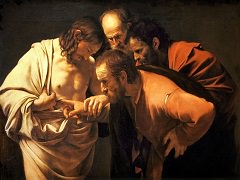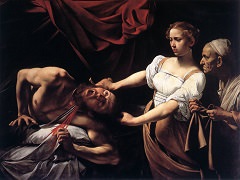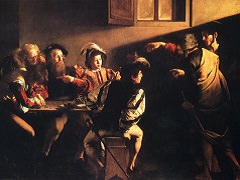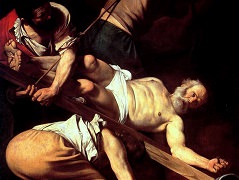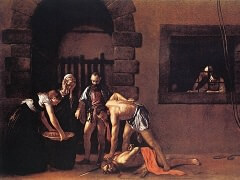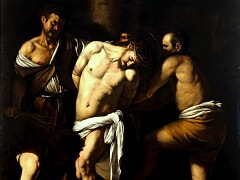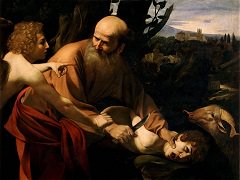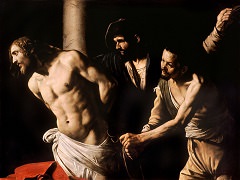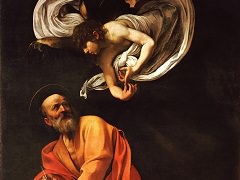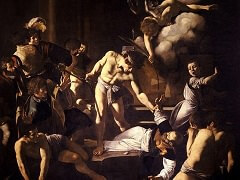The Entombment, 1603 by Caravaggio

The Entombment is the sole painting of Caravaggio's maturity that gained unanimous critical acclaim, and it was much copied- no fewer than forty-four drawn, painted, or engraved copies are known, including one by
Paul Cezanne, who, having never visited Rome, must have made his watercolor from a photograph or a print.
The Entombment is as tragic as Pieta of Michelangelo, which Caravaggio must have had in mind as he painted. Two members of the grieving little group are gently bearing Christ's body into a cave-tomb barely visible in the
obscurity of the left background. Much of the pathos is conveyed by the gestures: Nicodemus almost embracing Christ's legs, Saint John touching Christ's wound, the aged Virgin blessing Him and extending her arms to embrace the
whole group, and most poignant of all, Christ's pendant lifeless right arm and His left hand lying on His abdomen. Mary Cleophas's upraised arms recall Saint Paul's similar gesture of acquiescence; her face, the only one except
Christ's that is fully illuminated, looks up like Saint Paul's into the source of light as if seeking divine guidance.
In its fan-shaped arrangement the group is as compact and as monumental as a piece of sculpture. It is motionless, at the moment when the mourners pause just before carrying the corpse into the burial chamber. The slightly
diagonal recession to the left indicates the direction of their movements and prevents the picture from becoming static, as does the sharp point of the stone tomb cover on which they hesitate. This slab of stone refers
iconographically to Christ as the foundation of the Church. Its point projecting toward the picture plane, together with Nicodemus's wary glance out toward the chapel, establishes contact with the worshiper. When the priest
elevated the Host in the sepulchral half-light of the chapel, the effect on the worshiper must have been a reenactment of the sacrifice there a few inches above the altar, in perfect accord with Saint Philip's ideal of
Christianity as a direct, living experience for his congregation.

